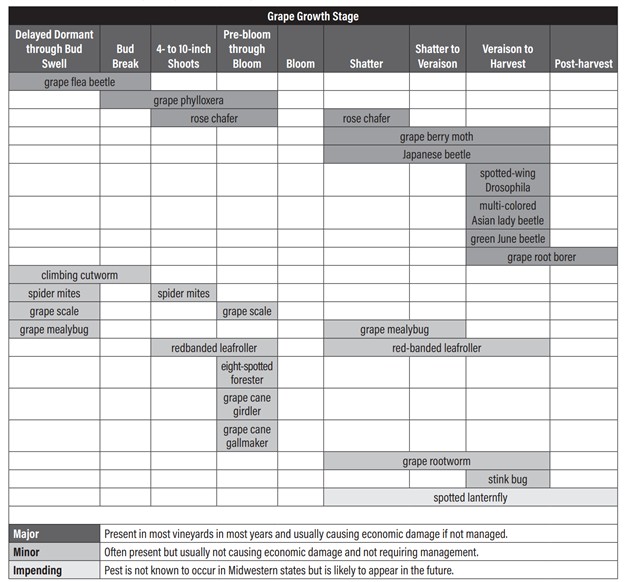Grapevines are in early stages of growth across the state. Significant shoot growth is expected with the warm weather predicted for this week.
Disease Control
This is a very important time to maintain preventative control over major grape diseases including Phomopsis, black rot, powdery mildew and downy mildew. Fungicide application should begin at 1-3 in shoot growth and should be repeated at 7-10 day intervals according to label instructions and environmental conditions through bloom, especially prior to a predicted rain event.
Pre-bloom applications should begin when shoots reach 10-12 inches. The critical period for disease control of black rot, powdery mildew and downy mildew is from immediate pre-bloom through 4-5 weeks after bloom. Fruit of the most commonly grown varieties become resistant to powdery and downy mildews as they mature, but the rachises and leaves remain susceptible. Therefore, fungicide protection against powdery and downy mildews is required throughout the growing season. Please note that downy and powdery pathogens are especially prone to fungicide resistance. To avoid this, do not apply back-to-back applications of any one systemic fungicide class. See Table 1 for Foundation Fungicide Program for Early Season Control of Grapevine Diseases.

Table 1. Foundation fungicide program for early season control of grape diseases. Source: Midwest Fruit Pest Management Guide
Insect Pest Control
Insect pests are active during different stages of grapevine growth. See Table 2 for the crop stages at which common pests in the Midwest are active. See the Midwest Fruit Pest Management Guide for information on the effectiveness of insecticides for controlling grape insects at different stages of grapevine growth (beginning on page 154).

Table 2. Grape Insect Pests- The shaded boxes represent the crop stages where common pests in the Midwest are active. Scouting and/or preventative sprays may be necessary or recommended. Source: Midwest Fruit Pest Management Guide